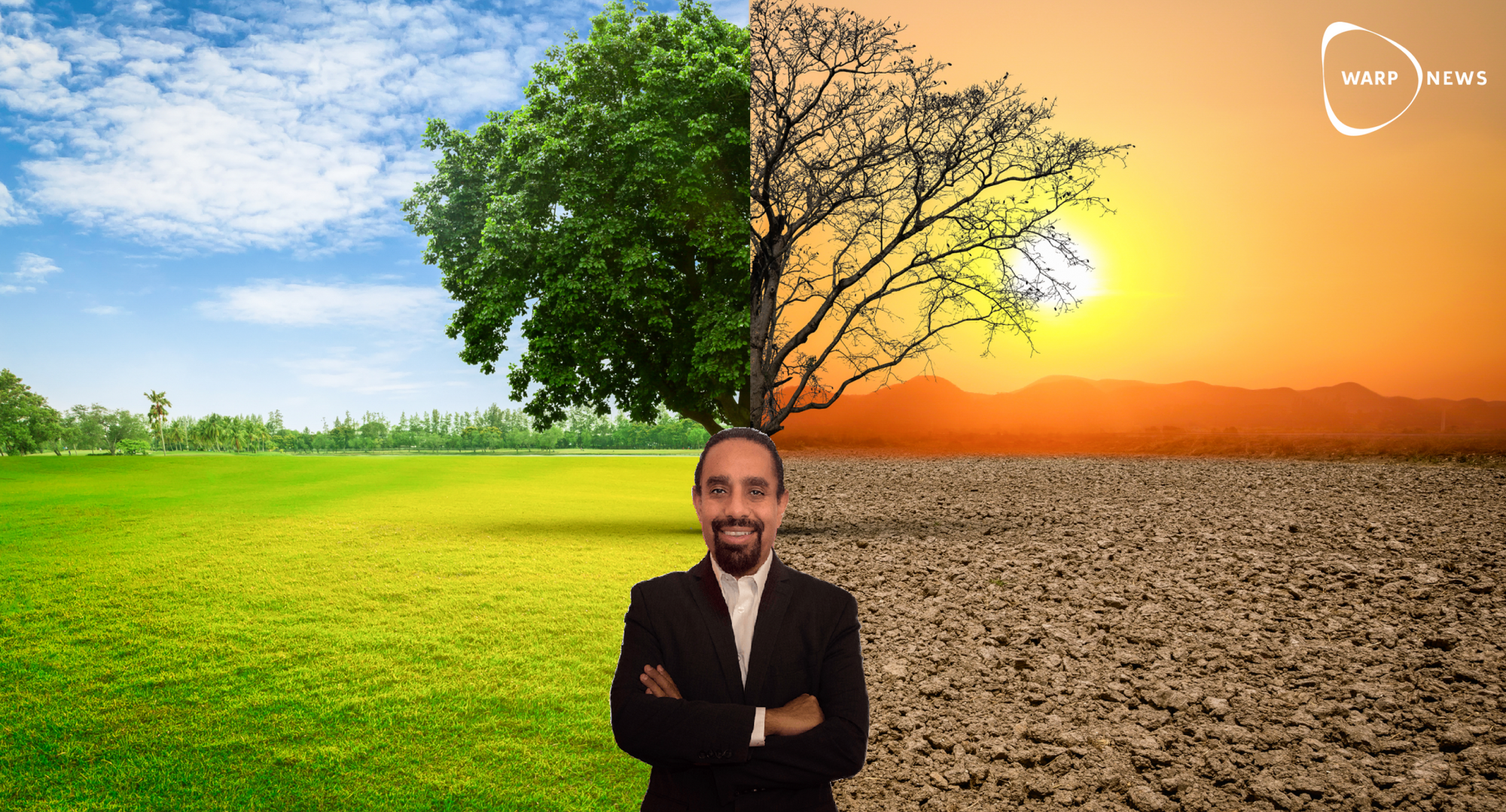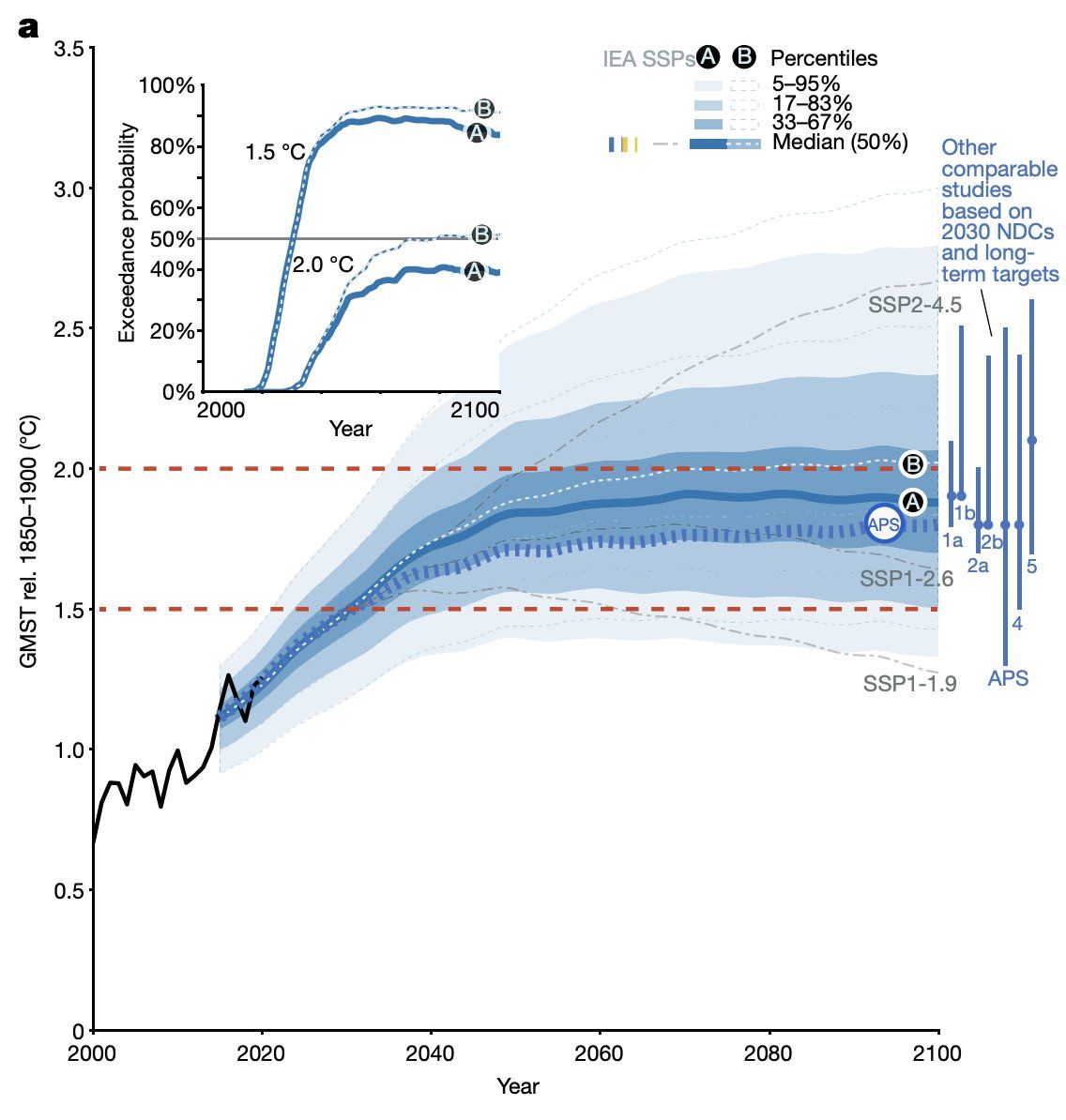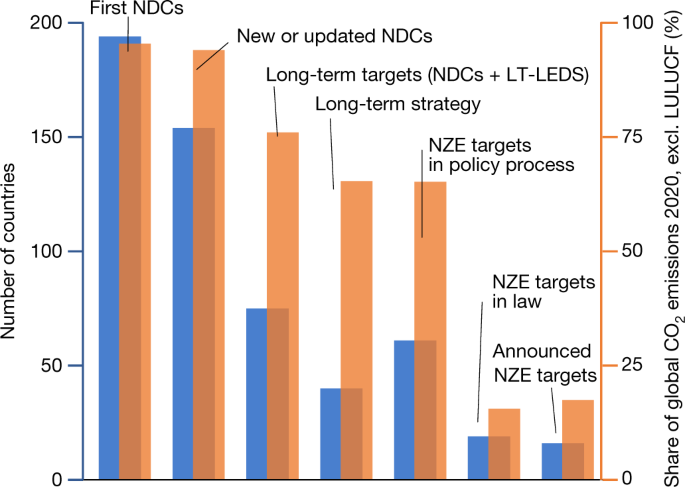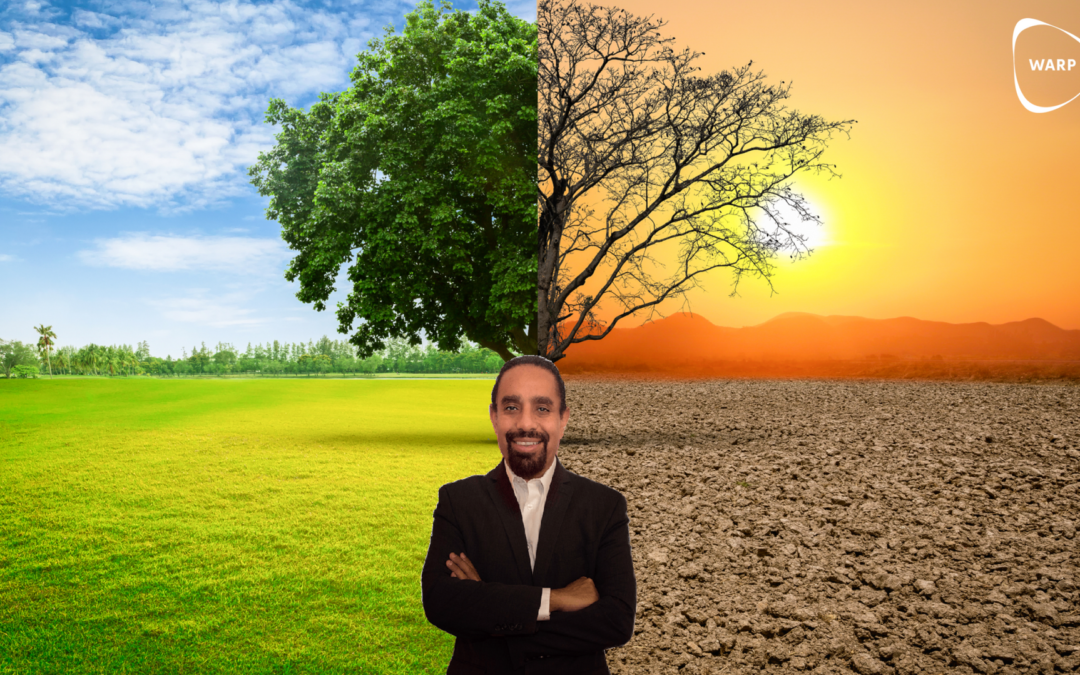
There is an extremely important and hope-filled climate paper out in Nature today. It finds that, if all the countries of the world fulfilled their climate commitments, the world would most likely limit climate change to just under 2 degrees Celsius.

This is the latest of more than a dozen studies over the last three years that have found that we've bent the curve of future warming down significantly. Here's a summary of those papers.
In our @Nature News and Views piece, we put this new paper in the context of an explosion of literature on current policy, 2030 NDC, and net-zero commitment outcomes that has been published over the past few years. pic.twitter.com/nHLLrfJchE
— Zeke Hausfather (@hausfath) April 13, 2022
Climate hope – and higher aspirations
For context, when I started in climate around 2010, expectations were that we would see 4 – 6 degrees Celsius of warming by 2100. That would be truly apocalyptic warming, with a severe chance of kicking off major feedback loops, and dramatic disruptions to civilization.
We now see a line of sight to staying below 2 degrees C. Now, our aspirations have also lifted. We'd like to stay below 1.5 degrees C of warming. And we have to be clear. We are not going to stay below 1.5 degrees C through decarbonization. It's no longer plausible.
Even if we were to stay below 1.5 degrees Celsius (which we're not), we would have major challenges with increased extreme weather, fires, & potential loss of almost all coral reefs.
So this new paper, and this wave of modeling studies, are extremely good news. Civilization will not end at 2 degrees C. There's every reason to believe that median human welfare will be much higher in 2100, at this level of warming, than it is today.
Four things we need to do
Even so, there is much more work to be done.
First, we must actually achieve the decarbonization that matches national pledges, meaning net zero in the rich world by ~2050, and in China and India by 2060 & 2070. That will require tech, policy, and economic innovation.
Second, we ought to find ways to even further accelerate this timeline for decarbonization. Every tenth of a degree matters. Bending the curve further to 1.8 or 1.7 degrees matters. The sooner we get to net zero, the better.
Third, we need to develop tools to intervene in fragile ecosystems to make them more resilient to climate effects. If you care about, e.g., coral reefs, this is no longer optional. They need our help to survive and thrive, even at 1.5-2 degrees Celsius.
Fourth, we need to develop tools to guard against tail risks. While these new studies show warming will *probably* stay below 2C, there are error bars, and there are still risks of feedback loops that cause faster warming than expected. We need tools to knock off that risk.
The case for solar geo-engineering
What kind of tools? We need tools to be able to intervene in the case of rapid methane release, or rapid sea ice loss in the arctic, or rapid glacier melt. More than any of those, we need to do the research to develop solar geo-engineering.
As I wrote above, we have missed 1.5 degrees through decarbonization alone. And while 2 C is very survivable, it comes with real losses. If we want to stay below 1.5 C, the only plausible path at this point is solar radiation management geo-engineering.
Solar geo-engineering could hold temperatures down a few tenths of a degree, at a cost of mere billions per year, giving us time to decarbonize without losing fragile ecosystems. All other solutions cost trillions, not billions.
I do not advocate deploying solar geo-engineering today. We simply don't know enough. I do advocate funding the research needed to fully understand its effects and side-effects. Today we spend maybe $10m a year on it. We should boost this R&D budget to about $1 billion per year.
Fantastic news
While I've used the last few paragraphs on controversial opinions, I want to come back to the very good news. Signs are that we've bent the curve of future warming from apocalyptic (4-6 degrees) to very survivable (~2 degrees). This is fantastic news.
The full nature paper with this newest modeling study (showing ~1.9 degrees C of warming if all nations fulfill their pledges) is here:

A useful explanatory thread on this recent study and the last three years of studies showing that we've bent the curve is found here.
We need to do much more to tackle climate change, but there is some good news for once.
In @Nature this week, @ClimateFran and I point out that falling costs of clean energy and strengthening climate policies move us away from the darkest climate futures: https://t.co/e6ZWNeddnd pic.twitter.com/ad0OY7AfU9
— Zeke Hausfather (@hausfath) April 13, 2022
Ramez Naam
Ramez Naam invests in startups that help address climate change and advance clean energy. He has been forecasting the exponential cost decline of clean energy for more than a decade. Read more about him at rameznaam.com.
This text was originally posted as a Twitter thread.






